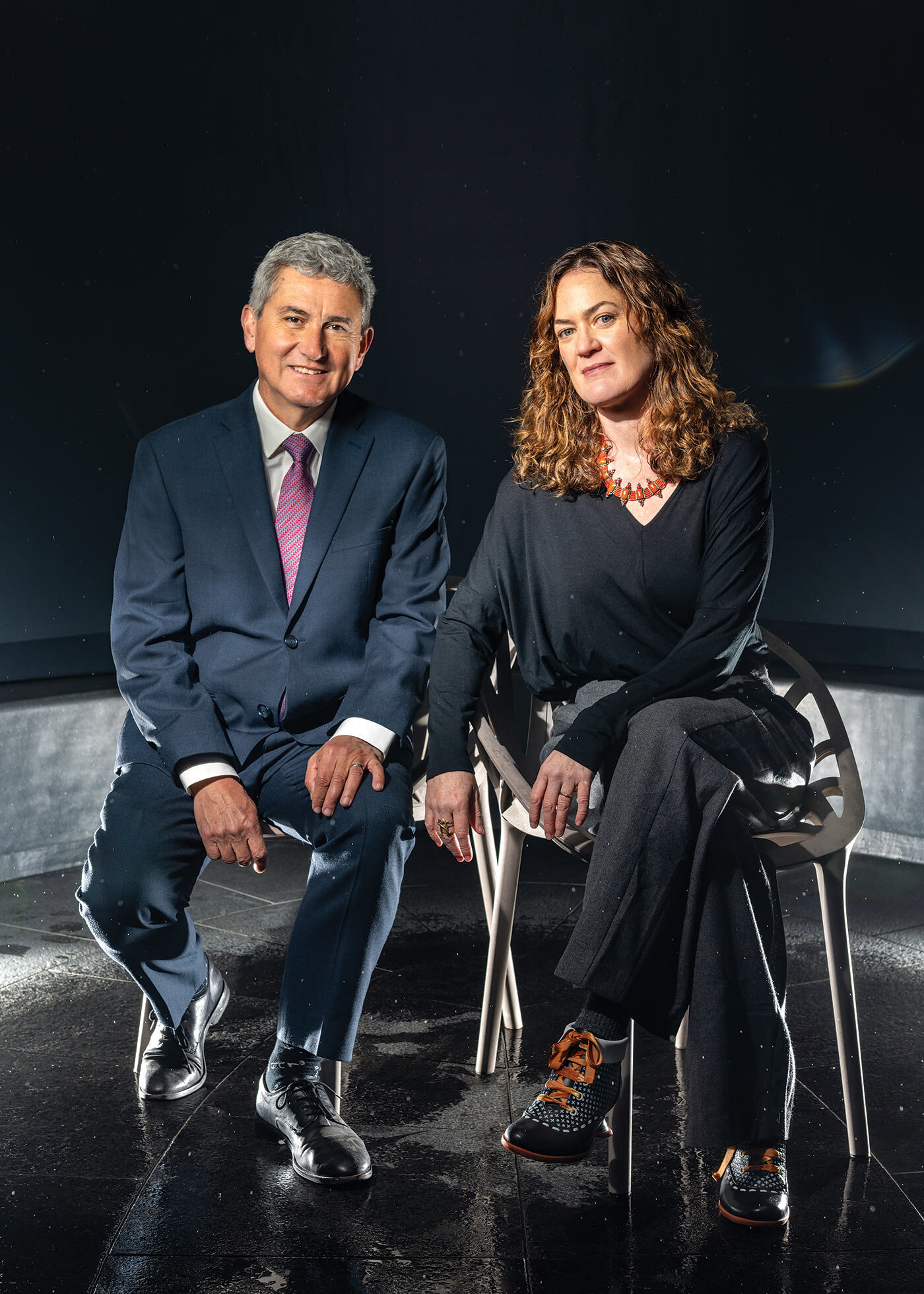Pablo Laguna, Ph.D., ’87 & Deirdre Shoemaker, Ph.D., ’99
Credit: Vivian Abagiu
As a married couple working in the same narrow field, what was it like when one of you was part of the team that made the huge scientific discovery of the first detection of gravitational waves?
Deirdre: When I saw the first event, we could tell that it was the merger of two black holes. It was super intense, because you felt like you were in a moment of history, and you wanted your fingerprint on it somewhere.
Pablo: I was not part of the LIGO Scientific Collaboration [the team to make the discovery] at that time. Members have to keep developments that happen within the collaboration confidential, so the first detection happened in September of 2015, and Deirdre saw, but it required months of analysis to be sure. During that time Deirdre didn’t tell me anything about that. She knew!
Deirdre: I feel like he must have known at some point, because those of us in the LIGO Scientific Collaboration were so stressed. We thought, “We can’t leak this because if it is not real, it’s going to hurt our chances of people believing us in the future.” So it became a real lockdown.
You both got your doctoral degrees at UT before returning recently to join the faculty. What brought you back?
Pablo: When I came in the 80s, the Who’s Who in theoretical physics was here or visited. It was amazing seeing people who were in the textbooks when I was back in Mexico. UT was an essential component in my academic life, and I tremendously enjoyed Austin. It was smaller then, but had a charm that fortunately it has not lost. When the opportunity came to come back to Austin – where, I like to say, everything started – it was fantastic.
Deirdre: We had history with the earlier UT Center for Relativity, too. Now we have started the Center for Gravitational Physics at UT to revive what was a beautiful and well-known tradition.
What are your plans moving forward?
Deirdre: What I’m devoting most of my time to now is: are we theoretically ready to take advantage of the new detections of gravitational waves when they come in? I’m looking at how we test general relativity, how we know that that’s the theory, and how do new detectors, like the LISA space-based gravitational-wave detector coming on line, help answer these questions.
Pablo: I am interested in exploring unexpected phenomena connected to general relativity and black holes, in particular, that have not received much attention but maybe could be detected. I plan to keep working with my students and postdocs and other colleagues in support of LIGO, LISA, and so on.
Gravitational waves resulting from colliding black holes were first detected in 2015.


